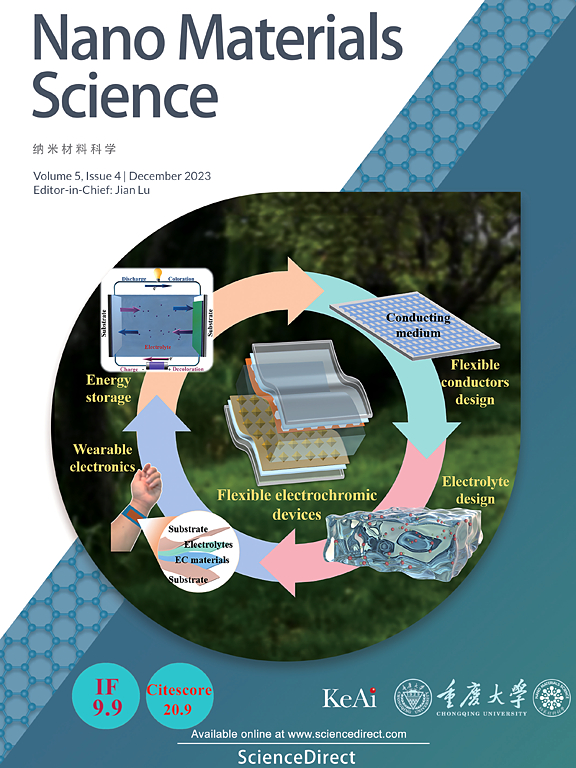离子液体在纳米聚苯胺形态结构中的作用及其对聚合介质性质的影响
IF 17.9
2区 材料科学
Q1 Engineering
引用次数: 0
摘要
在本研究中,研究的重点从以往文献中关注离子液体的结构转向聚苯胺的形态与聚合介质的物理化学性质之间的关系(由离子液体的加入量控制)。为此,按照标准实验流程,以[Pyrr][PTS]/水的不同重量比合成聚苯胺。在聚合介质中加入[Pyrr][PTS]可以控制聚苯胺的形态而不影响其结构。此外,[Pyrr][PTS]在不需要外部源的情况下促进了粘性反应体系。聚合体系的粘度限制了物质的扩散,从而导致聚合过程中均质成核模式的优势,从而导致聚苯胺形态的纳米结构。离子电导率反映了聚合介质中离子的迁移率,从而反映了离子对聚苯胺形成的干扰方式,从而影响聚苯胺纤维的排列和形状。聚苯胺的形态与聚合介质的物理化学性质之间的这种关系,通过加入离子液体来调节,是一种层状的、有前途的关系。在选择离子液体时,必须考虑离子液体对聚合介质粘度和迁移率的影响,从而得到符合要求形貌的聚苯胺。本文章由计算机程序翻译,如有差异,请以英文原文为准。

Beyond contribution of ionic liquids in nanostructuring polyaniline morphology; its effect on the properties of the polymerization medium
In the present work, the focus has been shifted to the relationship between the PANI morphology and the physicochemical properties, controlled by the amount of added ionic liquids, of the polymerization medium instead of focusing on the structure of the ionic liquids as used to be in the litterature. For that reason, PANI has been synthesized in different weight ratio of [Pyrr][PTS]/water following the standard experimental process. The addition of [Pyrr][PTS] into the polymerization medium controls the morphology of PANI without affecting its structure. Moreover, [Pyrr][PTS] promotes a viscous reaction system without the need of an external source. The viscosity of the polymerization system restricts the diffusion of species that leads to the predominance of the homogeneous nucleation mode during the course of polymerization and, thus, nanostructuring of PANI morphology. As for the ionic conductivity, it reflects the mobility of the ions of the polymerization medium and, thus, the way of its interference with the formed PANI that affects the arrangement and the shape of formed PANI fibers. This relationship between PANI morphology and the physicochemical properties, adjusted by adding ionic liquids, of the polymerization medium is prelaminar and promising. The effect of the ionic liquids on the viscosity as well as on the mobility of the polymerization medium have to be taken into consideration to choose the ionic liquids, which lead to the PANI with desired morphology.
求助全文
通过发布文献求助,成功后即可免费获取论文全文。
去求助
来源期刊

Nano Materials Science
Engineering-Mechanics of Materials
CiteScore
20.90
自引率
3.00%
发文量
294
审稿时长
9 weeks
期刊介绍:
Nano Materials Science (NMS) is an international and interdisciplinary, open access, scholarly journal. NMS publishes peer-reviewed original articles and reviews on nanoscale material science and nanometer devices, with topics encompassing preparation and processing; high-throughput characterization; material performance evaluation and application of material characteristics such as the microstructure and properties of one-dimensional, two-dimensional, and three-dimensional nanostructured and nanofunctional materials; design, preparation, and processing techniques; and performance evaluation technology and nanometer device applications.
 求助内容:
求助内容: 应助结果提醒方式:
应助结果提醒方式:


